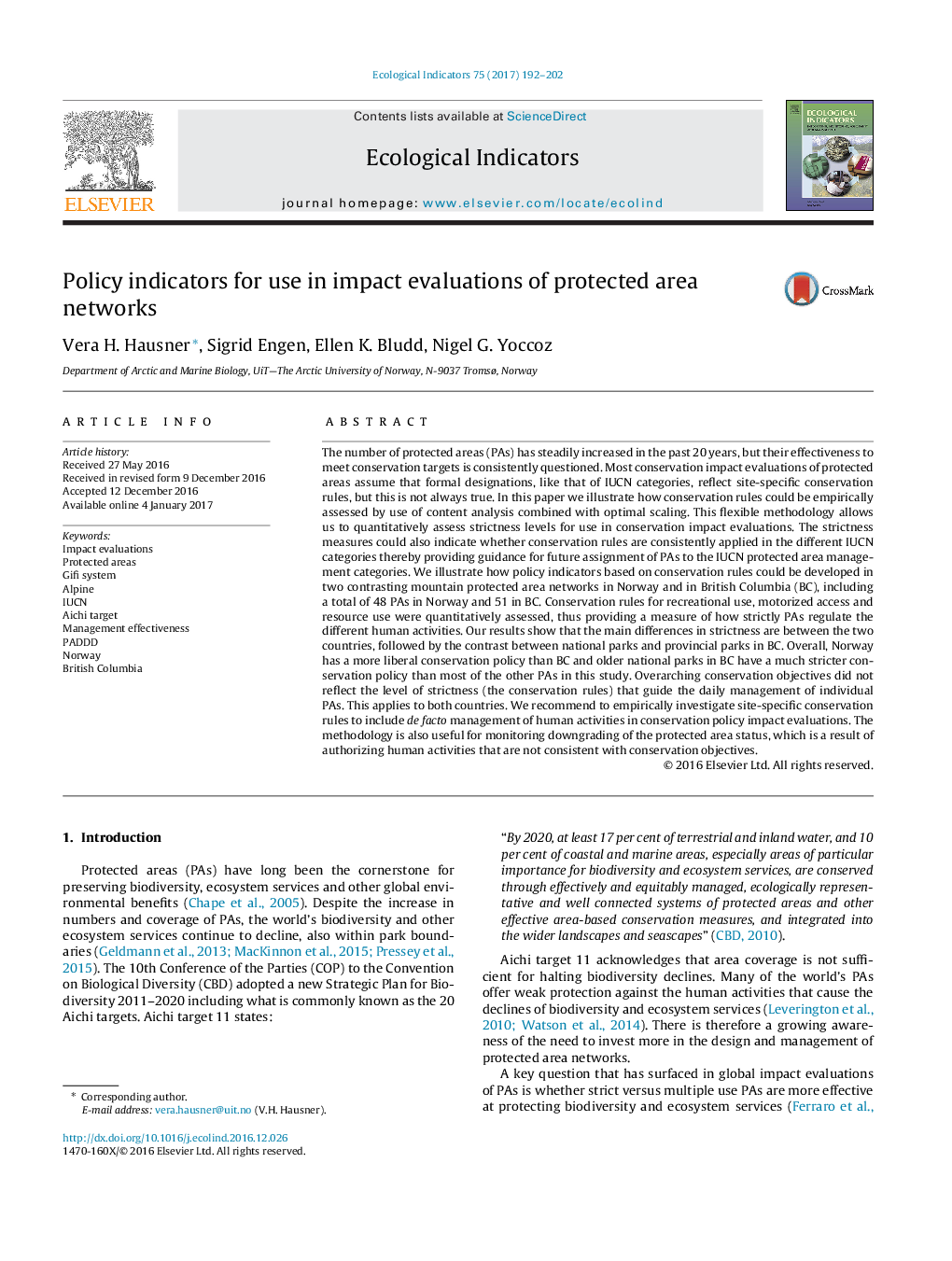| کد مقاله | کد نشریه | سال انتشار | مقاله انگلیسی | نسخه تمام متن |
|---|---|---|---|---|
| 5741810 | 1617127 | 2017 | 11 صفحه PDF | دانلود رایگان |
- We developed policy indicators for use in conservation impact evaluations.
- By use of content analysis combined with optimal scaling we determined how strictly human activities are regulated in mountain protected area networks in Norway and British Columbia.
- The strictness measures could be used to empirically evaluate the impact of conservation rules in protected areas.
- We used content analysis combined with optimal scaling to measure how strictly human activities are regulated in protected areas in Norway and BC.
The number of protected areas (PAs) has steadily increased in the past 20 years, but their effectiveness to meet conservation targets is consistently questioned. Most conservation impact evaluations of protected areas assume that formal designations, like that of IUCN categories, reflect site-specific conservation rules, but this is not always true. In this paper we illustrate how conservation rules could be empirically assessed by use of content analysis combined with optimal scaling. This flexible methodology allows us to quantitatively assess strictness levels for use in conservation impact evaluations. The strictness measures could also indicate whether conservation rules are consistently applied in the different IUCN categories thereby providing guidance for future assignment of PAs to the IUCN protected area management categories. We illustrate how policy indicators based on conservation rules could be developed in two contrasting mountain protected area networks in Norway and in British Columbia (BC), including a total of 48 PAs in Norway and 51 in BC. Conservation rules for recreational use, motorized access and resource use were quantitatively assessed, thus providing a measure of how strictly PAs regulate the different human activities. Our results show that the main differences in strictness are between the two countries, followed by the contrast between national parks and provincial parks in BC. Overall, Norway has a more liberal conservation policy than BC and older national parks in BC have a much stricter conservation policy than most of the other PAs in this study. Overarching conservation objectives did not reflect the level of strictness (the conservation rules) that guide the daily management of individual PAs. This applies to both countries. We recommend to empirically investigate site-specific conservation rules to include de facto management of human activities in conservation policy impact evaluations. The methodology is also useful for monitoring downgrading of the protected area status, which is a result of authorizing human activities that are not consistent with conservation objectives.
Journal: Ecological Indicators - Volume 75, April 2017, Pages 192-202
